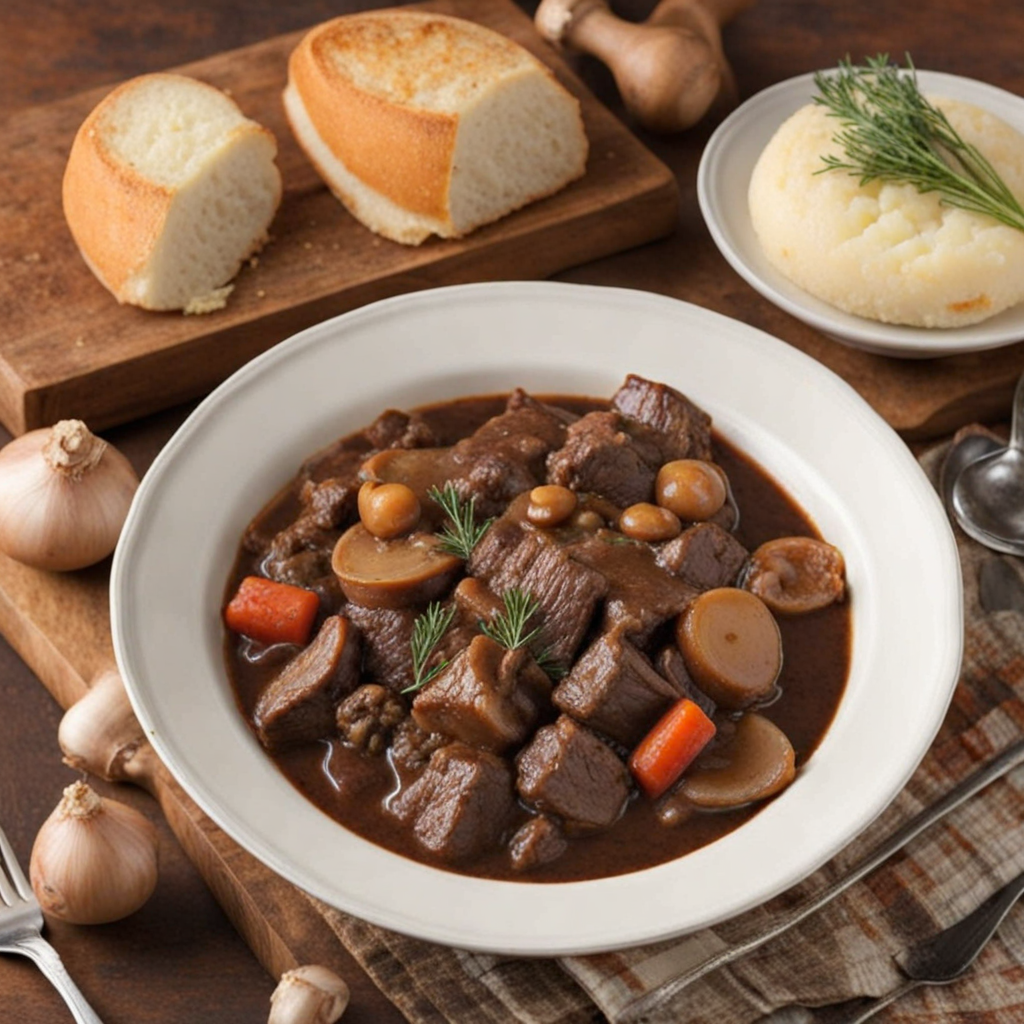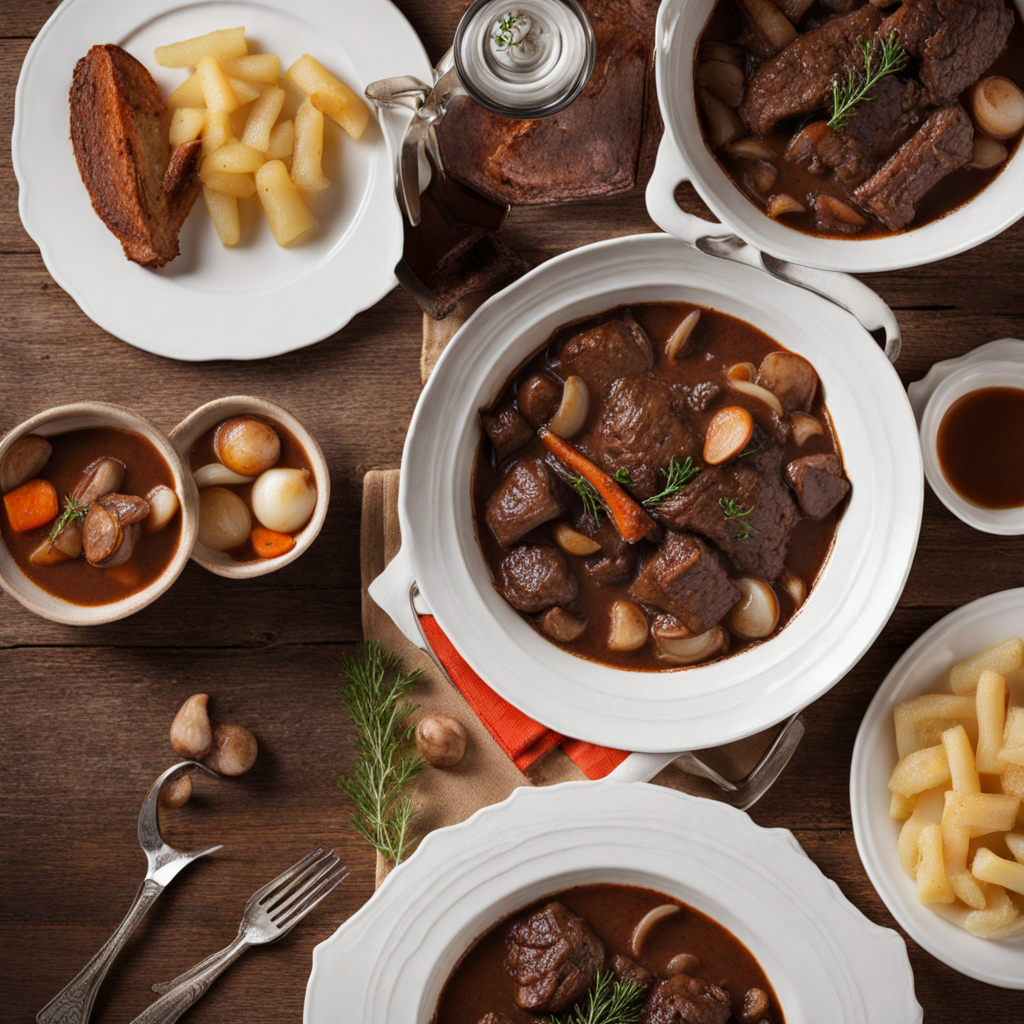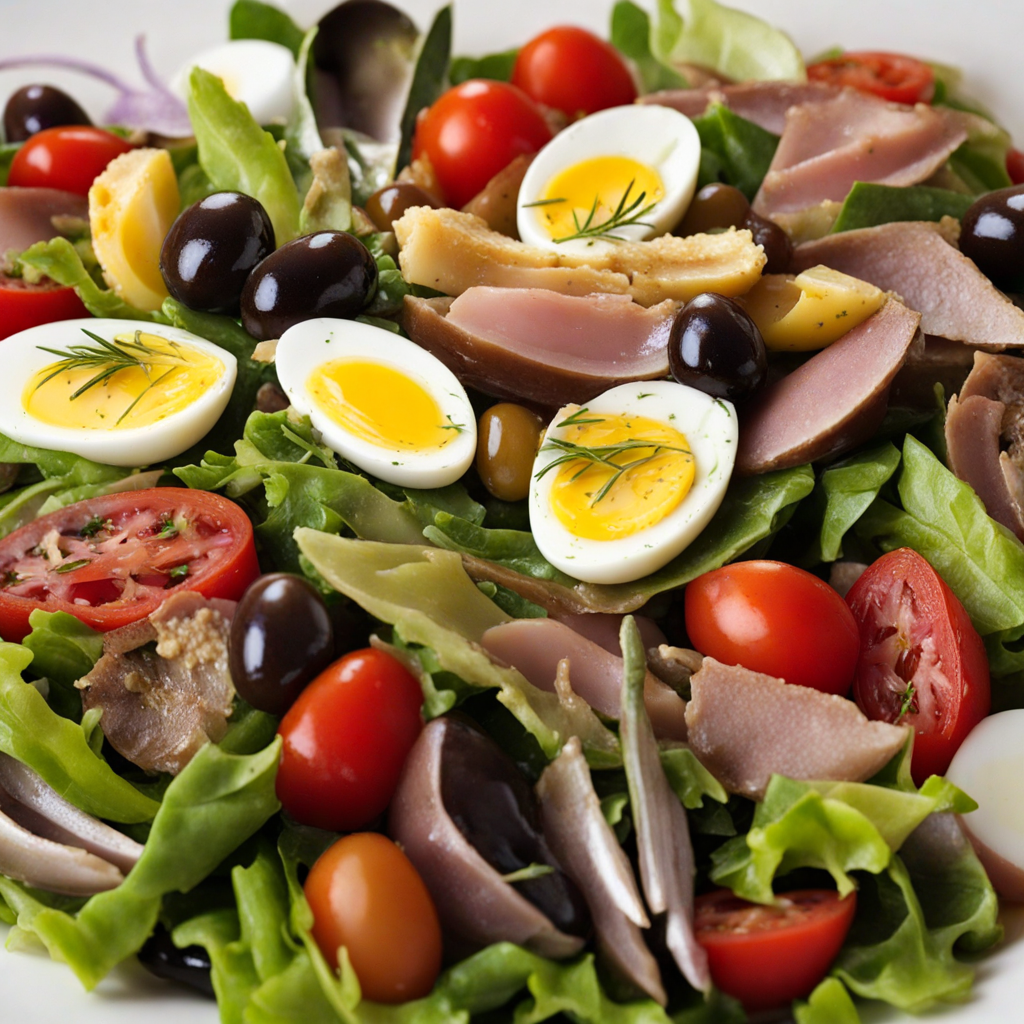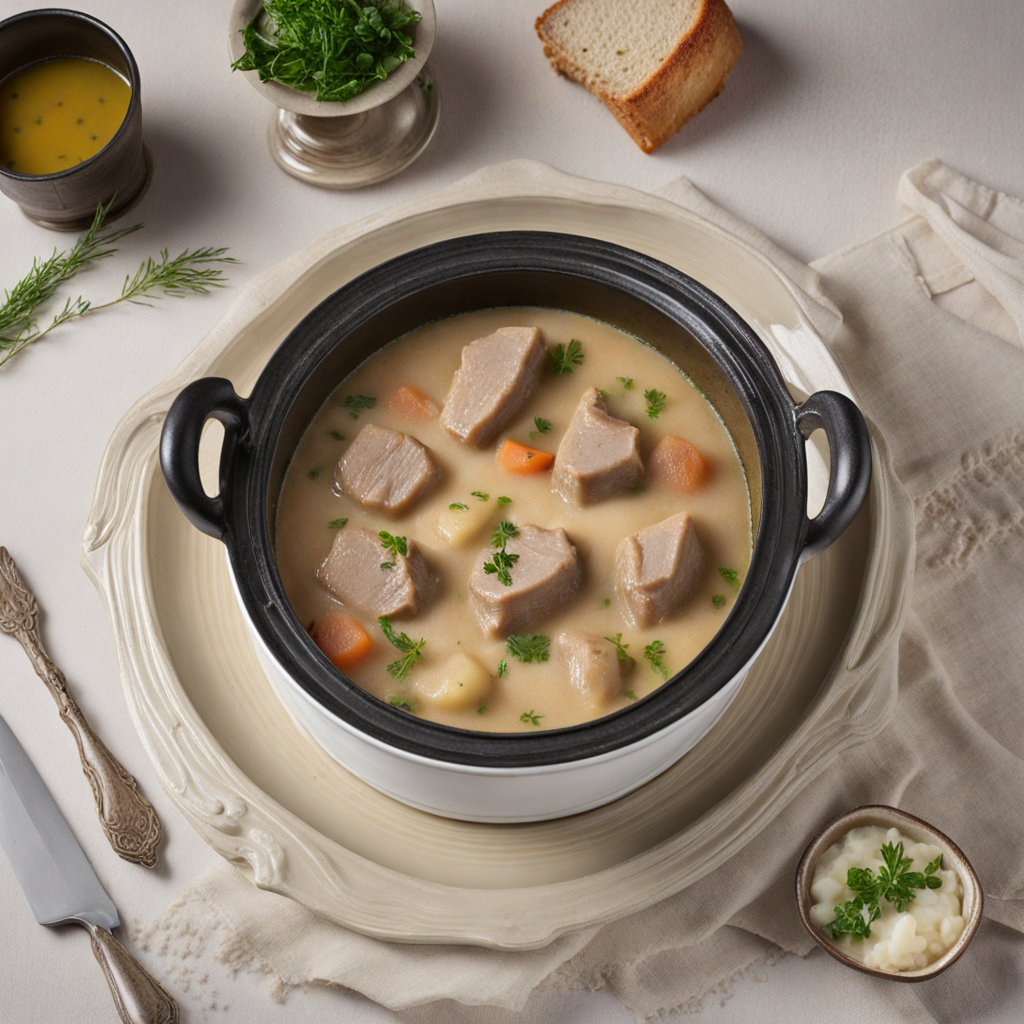Beef Bourguignon
Beef Bourguignon, a classic French dish hailing from the Burgundy region, is a sumptuous and hearty stew that embodies the rich culinary traditions of France. At its core, this dish features tender pieces of beef, typically chuck or brisket, that are slow-cooked to perfection in a robust red wine, often sourced from the very vineyards of Burgundy. The wine not only infuses the meat with deep flavor but also contributes to the dish's characteristic rich, dark color. Accompanying the beef are aromatic vegetables such as carrots, onions, and garlic, which enhance the stew's complexity and provide a subtle sweetness that balances the savory elements. The cooking process is an essential aspect of Beef Bourguignon, as it involves browning the beef to develop a rich crust, followed by a gentle simmer that allows the flavors to meld beautifully over several hours. This slow-cooking technique ensures that the beef becomes incredibly tender, almost melting in your mouth, while the wine reduces into a luscious sauce. Furthermore, the addition of herbs like thyme, bay leaves, and sometimes even mushrooms, elevates the dish, creating a tapestry of flavors that is both comforting and luxurious. Served traditionally with a side of crusty French bread or over creamy mashed potatoes, Beef Bourguignon is the epitome of rustic French cooking, inviting you to indulge in its warming embrace. Each bite offers a delightful combination of tender meat, earthy vegetables, and a rich, wine-infused sauce that transports you to the charming bistros of France. This dish not only showcases the beauty of slow-cooked comfort food but also invites you to explore the depths of French culinary heritage, making it a must-try for any adventurous palate.
How It Became This Dish
Bœuf Bourguignon: A Culinary Journey Through History Bœuf bourguignon, a quintessential dish of French cuisine, is not just a hearty beef stew; it is a narrative woven through the fabric of France's cultural and culinary evolution. This dish encapsulates the essence of French gastronomy, merging rustic roots with sophisticated techniques, underscoring the deep connection between food, geography, and society. To fully appreciate bœuf bourguignon, we must delve into its origins, cultural significance, and its development over time. Origins of Bœuf Bourguignon The name bœuf bourguignon literally translates to "beef Burgundy," indicating its geographical roots in the Burgundy region of east-central France. This area is renowned not only for its rich history and beautiful landscapes but also for its exceptional wine production. Culinary historians trace the origins of bœuf bourguignon back to the Middle Ages, when the people of Burgundy began to simmer tough cuts of beef in red wine, a method designed to tenderize the meat and enhance its flavor. This primitive technique of slow cooking has ancient roots and was a practical response to the challenges of using less desirable cuts of meat. The use of wine in cooking is a hallmark of French cuisine, and in Burgundy, the local red wines, particularly Pinot Noir, became a crucial ingredient. The region's climate and terroir produce wines that are both robust and complex, making them ideal for marinating and cooking meat. Initially, bœuf bourguignon was a dish for the peasants, who needed to make the most of tougher cuts of meat. Over time, as culinary techniques evolved and the bourgeois class gained an appreciation for refined cooking, bœuf bourguignon transitioned from simple peasant fare to a celebrated dish in French haute cuisine. Cultural Significance Bœuf bourguignon is more than just food; it is a symbol of French identity and pride. In France, food is often seen as a reflection of culture, history, and tradition. The dish exemplifies the French ethos of "terroir," the idea that the environment, including soil and climate, influences the characteristics of food. In Burgundy, the interplay between the land and the culinary practices is particularly pronounced, with bœuf bourguignon serving as a testament to local agricultural practices and the importance of wine in regional identity. The dish gained further prominence in the 20th century, especially with the rise of gastronomy as a serious art form. The influential cookbook "Mastering the Art of French Cooking," authored by Julia Child, introduced bœuf bourguignon to the American public in the 1960s. Julia Child's detailed recipes and her passion for French cuisine helped to popularize this dish outside of France, making it a staple in American homes and solidifying its status as a classic. Through her efforts, bœuf bourguignon became a symbol of culinary sophistication and a bridge between French and American culinary traditions. Development Over Time The evolution of bœuf bourguignon reflects broader changes in French society and culinary practices. In the early days, the dish was prepared primarily by rural families using ingredients that were locally sourced and affordable. The basic components included beef, red wine, onions, carrots, and mushrooms, often enhanced with herbs like thyme and bay leaves. The dish was a practical way to utilize what was available, embodying the resourcefulness of traditional French cooking. As culinary techniques advanced during the Renaissance and into the Enlightenment, the preparation of bœuf bourguignon became more refined. Chefs began to emphasize presentation and flavor, incorporating techniques such as browning meat to develop deeper flavors and using stock to enrich the sauce. This transformation mirrored the broader trends in French cuisine, which began to favor more elaborate preparations and presentations. The 19th century marked a pivotal moment for bœuf bourguignon as it began to appear in prestigious restaurants and cookbooks, further elevating its status. Chefs like Auguste Escoffier, often hailed as the father of modern French cuisine, recognized the dish's potential and included it in high-end menus, showcasing its versatility and depth. The dish became synonymous with French culinary excellence, representing the artistry and tradition of French cooking. In the late 20th and early 21st centuries, bœuf bourguignon experienced a resurgence in popularity, albeit in a more informal context. The rise of bistro culture in France, where traditional dishes are served in a relaxed atmosphere, contributed to the dish's accessibility. Home cooks embraced bœuf bourguignon, often experimenting with variations that incorporated seasonal ingredients or modern culinary techniques. Moreover, the trend of slow cooking has reinvigorated interest in bœuf bourguignon, especially with the advent of slow cookers and instant pots, making it easier for contemporary home cooks to replicate this classic dish. The essence of bœuf bourguignon remains intact, even as new generations put their own spin on the recipe, ensuring that the dish continues to evolve while honoring its rich heritage. Conclusion Bœuf bourguignon is a dish that transcends time and place, encapsulating the heart of French culinary tradition. From its humble origins as a peasant dish to its status as a global symbol of French cuisine, bœuf bourguignon tells the story of a region, a culture, and the people who have nurtured it. Its preparation is a celebration of local ingredients, history, and the art of cooking itself. In a world where culinary trends often come and go, bœuf bourguignon stands as a testament to the enduring nature of traditional cooking. As families gather around the table to enjoy this rich, flavorful stew, they partake in a ritual that has been passed down through generations, connecting them to their ancestors and to the land that sustains them. The story of bœuf bourguignon is, ultimately, a story of community, tradition, and the love of good food—a narrative that continues to unfold with each pot that simmers on the stove.
You may like
Discover local flavors from France







